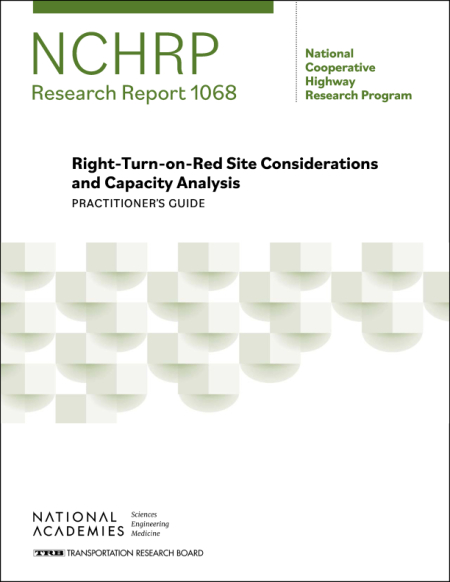Right-Turn-on-Red Site Considerations
NCHRP has recently released "Right-Turn-on-Red Site Considerations and Capacity Analysis: Practitioner's Guide", which addresses the need for improved techniques for estimating the performance of right-turn-on-red (RTOR) movements at signalized intersections.
This new report presents two methods for estimating RTOR volume and capacity, along with a spreadsheet tool to facilitate the use of these methods. The report also provides guidance on when to prohibit RTOR at a given intersection.
The determination of the level-of-service (LOS) at signalized intersections is an important activity for decision-making in the allocation of resources for managing public roads, estimating the impact of new developments, and designing signal timing plans. There is a need to develop models of RTOR volume to permit users of the Highway Capacity Manual methodology to estimate the RTOR rather than rely on collection of field data, which often does not include RTOR as a separate quantity.
Supplemental to this report is the web-only document "Right-Turn-on-Red Operation at Signalized Intersections with Single and Dual Right-Turn Lanes: Evaluating Performance", which develops a model to predict RTOR volume and to improve guidance for whether to allow RTOR at intersections.
Access the full report here
Who is NCHRP?
The National Cooperative Highway Research Program conducts research in problem areas that affect highway planning, design, construction, operation, and maintenance in the United States.
Administered under the Transportation Research Board (TRB), NCHRP is a collaborative effort between the Federal Highway Administration (FHWA) and the National Academy of Sciences.
Right-Turn-On-Red
A permissible RTOR was introduced back in the 1970s as a fuel savings measure but has since shown the potential to be detrimental to crosswalk pedestrians.
While the vehicle code requires motorists to come to a full stop and yield to cross street traffic, many motorists do not fully comply and can endanger pedestrians.


